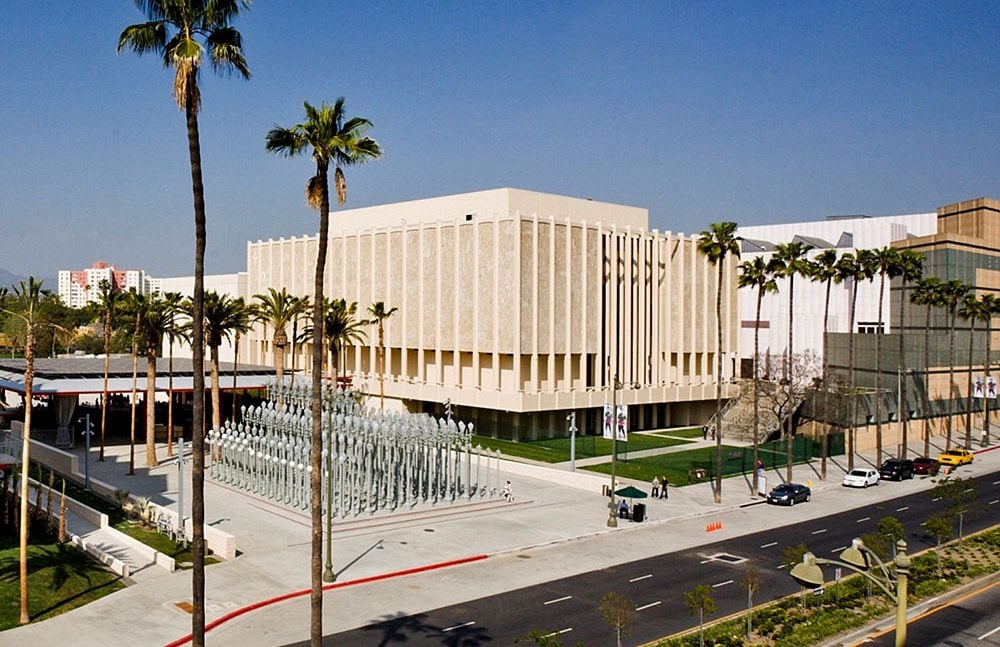
At least four works by artists from South Korea shown at the Los Angeles County Museum of Art (LACMA) may be fakes, according to leading experts. The works in question include Park Soo-keun’s Waikiki (early 1960s) and Three Women and a Child (1961) and Lee Jung-seob’s A Bull and a Child and Crawling Children. The paintings were included in an exhibition that closed on June 30 titled “Korean Treasures from the Chester and Cameron Chang Collection,” which showcased 35 of about 100 artworks donated by the father-son duo in 2021.
Initial concerns about the authenticity of the works were raised in Korean media in February, just after the exhibition opened. The Galleries Association of Korea then contacted the museum about the suspected forgeries in April, according to a report in The Korean Times. The group requested information from LACMA regarding the authenticity and background of the exhibition, which was curated by Stephen Little, the museum’s head of Chinese and Korean art.
At the end of June, LACMA held an official appraisal session with with Korean art experts. These included: Dong-guk Lee, director of the Gyeonggi Provincial Museum; Hyun-sun Tae, senior researcher at the Leeum Museum of Art; Sun-pyo Hong, professor emeritus at Ewha Womans University; and Sun-hee Kim, former director of the Busan Museum of Art.
The experts suggested there were spatial arrangement issues and skeptical signatures in Park’s paintings while Lee’s portrayal of bulls was determined to be atypical, according to a report in Korea JoonAng Daily. Ultimately, they said Crawling Children changed from a vertical layout to an unsigned horizontal layout while another work, Children Playing on a Pole, was found to be a forgery. The experts further criticized the museum for a lack of curatorial preparation and general understanding of Korean art.
In an email to Artnet News, the museum did not confirm whether the works were counterfeit. “As is longstanding practice, the works in LACMA’s permanent collection are continuously studied as new discoveries are made and research progresses,” the museum said, noting that the exhibition was the first time the works were seen publicly.
When asked about the research it had conducted into the donation at the time it received the gift, a spokesperson said: “LACMA has confidence in the scientific findings that our research has produced to date, and we are committed to continuing to conduct additional research.”
Additionally, the museum said that further contextualization of these works and their art historical significance will appear in future LACMA publications, both online and in print.
Previously, the Changs had commissioned reports in 2015 and 2017 from the former Center for Art Materials Analysis, which found consistency with the styles of the two artists and the materials they used in the timeframe the works were purported to have been created.
In 2022, LACMA’s Painting Conservation Laboratory examined all works donated by the Changs but did not find any characteristics that would suggest the works were not from the era they were said to have been painted in and the wear and tear on the works were consistent with their age.
“This exhibition reflects LACMA’s role as a national leader in presenting exhibitions and scholarship of Korean art in the United States,” the museum had touted in a press release advertising the show.
Another panel of ceramics experts also raised authenticity concerns about works in the collection, deeming a purported 12th-century celadon was a mid-20th-century imitation. Several of those were previously subjected to thermoluminescence testing at Oxford Authentication in 2007 and were proven “unequivocally,” according to the museum, to date to the 18th century and 19th century and are not 20th century forgeries.
LACMA has promised to test any ceramics that did not previously undergo thermoluminescence testing and will publish the results.